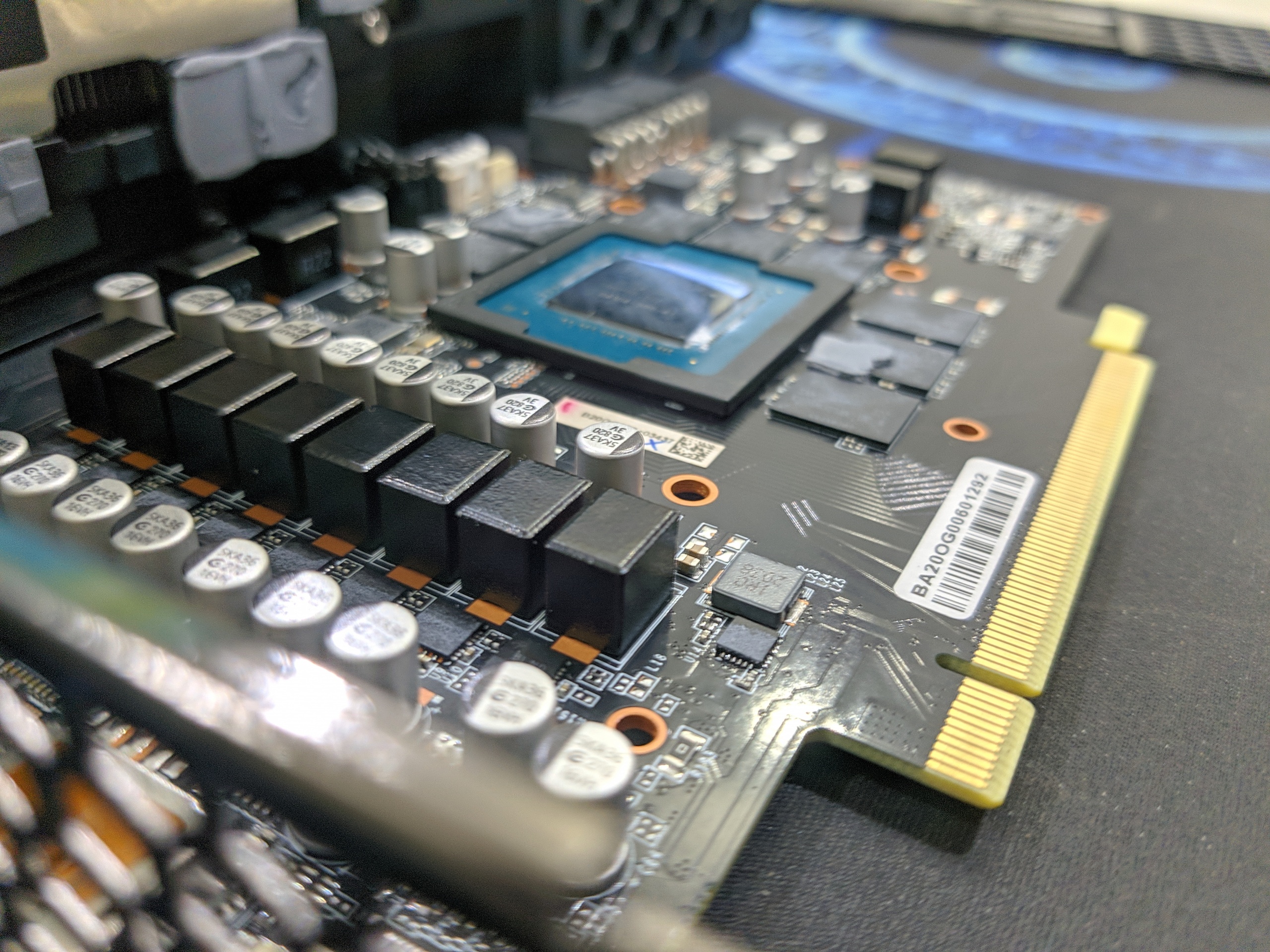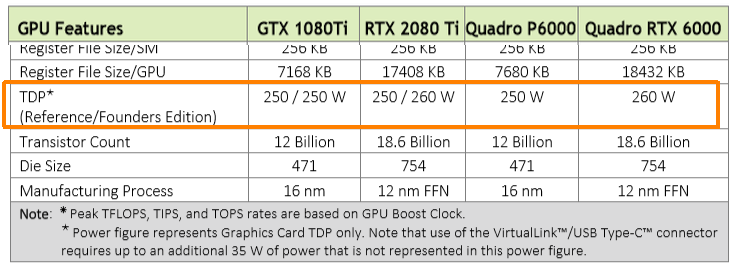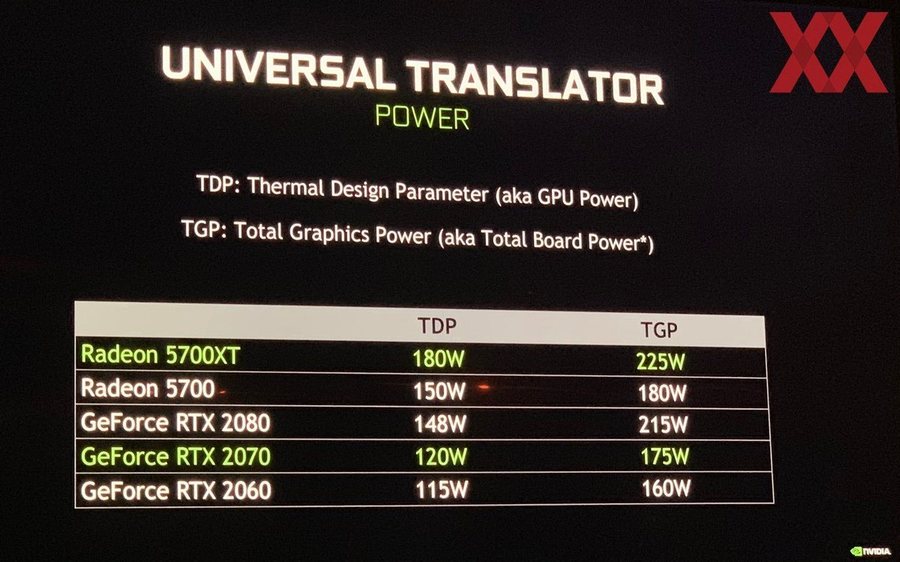Graphics Card TGP, TBP and TDP – What is the Difference?
With the rise of high-performance PC components, there has been a slow but constant rise in the power requirements of these components as well. Even though with each generation of a new product there are certain efficiency improvements, however, those improvements are not enough to counter the increased power requirements of the products due to a simultaneous increase in the performance of the product as well. This means that as progress is made in the various categories of computer components, there is a certain increase in the power consumption of those products as well.

Graphics cards are certainly the biggest culprits when it comes to the power consumption of your PC. They are single-handedly the most power-hungry components inside a gaming machine and therefore contribute the most to the power consumption. This is the reason that a lot of PC enthusiasts and savvy buyers nowadays check the power consumption of their graphics cards when shopping for a power supply. As you can find out in our advanced guide for buying a PSU, knowing how much power the different components of the PC draw is an important part of the process. The only problem with the process of finding out the power consumption of your graphics card is the number of confusing acronyms and brandings being associated with the power consumption concept.
Power Consumption Ratings
Whenever you search for the power consumption rating for a graphics card, there is a good chance that you might not get your answer straight away. There is a bit of a confusing trend going on in this space that is not really helpful for the general consumer. Most companies list 3 different types of power consumption ratings on their product pages or on their promotional material.
TDP
TDP in graphics cards is actually a bit different than the TDP rating of processors. While in CPUs, the TDP acronym stands for Thermal Design Power, in graphics cards it actually means the Thermal Design Parameter. This is actually the closest measure of the actual GPU Power that we currently have without measuring the power draw of the GPU manually.
The TDP of the graphics cards is similar to the TDP of the processors in one key way. Just like in the processors, the TDP of the graphics card is defined by the manufacturer and it refers to the thermal parameter that the GPU generates. This refers to the heat that it gives off in the form of watts and is therefore defined with a parameter such as watts.
This is certainly a vague way to measure and advertise the power consumption rating of a GPU due to the fact that the power draw is measured in electrical watts while the heat output of the GPU is measured in thermal watts. Now, both are essentially the same thing, but there is a difference between the power drawn by the GPU and the heat produced by it, and that difference is actually converted into the work that the GPU is actively performing.

The TDP can also be understood as the maximum amount of heat generated by the graphics card that its cooling system has to dissipate under normal conditions. It certainly does not reflect the total power consumption of a graphics card directly.
This is by far the most commonly advertised rating by manufacturers and retailers. However, two more specific rating systems are also used in the GPU space.
TGP
One of the more interesting brandings has to be TGP which stands for Total Graphics Power. This is understood as the power consumption of the GPU and its entire PCB but without its cooling and lighting system. This refers to the power that is required by the GPU to function, however extra elements such as the cooling fans and other elements of the cooling system, or optional elements such as lighting are not included in the total TGP rating of the card.
TGP is a more specific value due to the fact that it counts the elements that are directly on the board itself. This is important because of the difference in manufacturing processes that exist between different Add-in-Board partners. While most of the board partners use a reference PCB, they design their own cooling and lighting systems that accompany the cards to the market. Since every manufacturer’s cooling and lighting system is different, the use of one value to describe the power consumption of all cards in the market might be a bit inaccurate. Therefore, values such as TGP exist to make it a bit more specific.
Since TGP does not take into account all the cooling and lighting elements in the card, the only components left are on the PCB itself. As most AIB partners share the same reference PCB, they also share the exact TGP while having slightly different TBP ratings. This is where the difference between the two becomes clear.

TGP can also be defined as the maximum amount of graphics board power that the system power supply should be able to provide to the graphics card. This is a point of interest for normal consumers as well because the purchase decision of a power supply might hinge on this value. Granted, the differences between the TDP and the TGP ratings are not astronomical, however, these differences can certainly be a point of consideration for buyers who already have a PSU that is on the very edge of what the graphics card demands in terms of power.
TBP
This acronym stands for Total Board Power and it is only slightly different than TGP. This parameter is mostly used by AMD for their Radeon graphics cards. Total Board Power differs from TGP in one very basic aspect which is that it affects the total as well as the peak consumption of the card. The TBP of a card is a slightly higher number than the TGP of the card and therefore gives a better idea of the peak consumption that the card might reach under load.
This is mainly because the TBP number also includes the heat given off by the cooling system of the card, the fans, and the lighting system such as LEDs on the shroud as well. Including all these factors into the total consumption number of the card makes sense as it provides an idea of the peak consumption that the card can potentially reach under certain conditions. Moreover, the power consumption of the GDDR6 memory (or other memory types that the card might use such as G6X, HBM, etc), voltage controllers, VRM components, coils, capacitors, and even the small LEDs on the card are accounted for in this rating.

We can summarize the differences between the three ratings in this way. If you want to know how much power a graphics card will consume as a whole, then you should look at its TBP number. If you want to know the power consumption of the GPU die only, then the concerned number is TDP, and if you want to know the power consumption of the PCB with the GPU but without any additional components such as fans or LEDs then you should consider the TGP number.
Which One to Use?
There isn’t a single specific rating that is entirely applicable to all the different scenarios where you might need to know the power consumption of a graphics card. All three commonly known ratings are useful in some way or another. It really depends on what you are looking for when talking about the power consumption of a card as that would dictate what rating is most appropriate.
In scenarios where you are comparing the theoretical power requirements of a lot of different GPUs across different generations, the TDP is a fairly consistent and reliable metric to use. For example, if you want to compare the power consumption of a GTX 1080Ti with the RTX 3090 and you want to know which one requires more power, the TDP number is a fairly easy and consistent way to compare the power needs of the two GPUs.
If you are concerned with the power consumption of one particular PCB design of one card, then the TGP is a more appropriate rating to consider. Say you want to find out the power consumption of the reference PCB of the RTX 3080. In this situation, the TGP number will be the closest to the actual power consumption you might see in real life with that PCB. This can be useful if you are separately using the PCB under a custom water-block (such as the ones we recommend) and you want an idea of its power consumption without the factory cooling solution.
Finally, if you want an idea of the peak power consumption of a particular graphics card model, then TBP is an appropriate rating to consider. TBP includes every little component of a graphics card and therefore gives the highest number out of all three, but it is going to be fairly close to what you might see in real-life under stock conditions.
Where Are They Useful?
So, are these numbers even useful outside of theoretical comparisons? Well, the answer to that is not quite as straightforward as it may seem at first. There are specific use-cases for each one of these ratings, but those might not coincide with what the average user might be looking for.
The most important use-case for these ratings is the manufacturing of the cooling solution for the graphics cards. TDP is essential for the design and manufacturing processes of the coolers that accompany the GPUs in the graphics cards. Since the GPU die is made by either Nvidia or AMD, they have to come up with a fairly standard measure of the amount of heat generated by the GPU in order to give their partners an idea of what kind of cooler is necessary for their GPUs. The GPU manufacturer has to give the TDP ratings to the Add-in-Board partners so that they can design and manufacture cooling solutions for their graphics cards based on the amount of heat generated by the GPU die as determined by the TDP.

While the professional and industrial application of these ratings is quite interesting, the consumer application is far less so. The only reason why a normal PC gamer or an enthusiast might want to consider these ratings is to make a direct comparison between the power consumption of different GPUs. Another area where these ratings might come in handy is in the process of purchasing a power supply. Ratings such as TGP and TBP are most useful in the phase of making a purchase decision because TDP is generally lower than the TBP due to the fact that it does not account for all the other components on the PCB, let alone the cooling solution of the card.
Conclusion
TBP, TGP, and TDP are common ratings for power consumption of a graphics card that is often used by manufacturers in order to give an idea of how much power the internal components of the card require. While each rating actually gives a slightly different idea of the total power consumption due to disparities in the method, their fundamental goal is the same.
TDP is a measure of the heat produced by the core of the graphics card which is the GPU, and it is used to design and manufacture the cooling solutions for the graphics cards. TGP is the total power that is consumed by the PCB components including the GPU, and it does not take into account the different cooling elements or lighting elements of the card. TDP does take into account those factors, and thus provides a peak rating of how much power the graphics card can consume in the real-world under certain situations.
While all three of these ratings are fairly consistent and reliable, the actual power consumption of the graphics cards may vary significantly even between similar versions of the same GPU. This is why actual power consumption data measured in real-life is more accurate than these ratings due to the fact that the ratings are constant and do not always accurately translate into real-life numbers.





